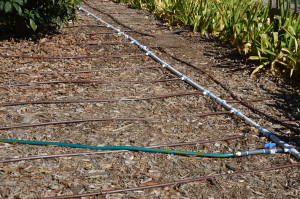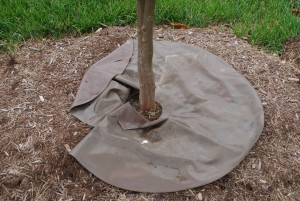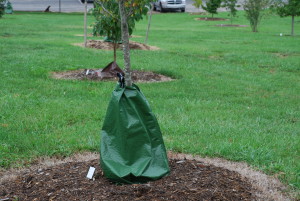These days there are lots of choices in watering gardens, individual containers, and newly planted trees. Before setting your flowers or veggies, install drip lines or soaker hoses. These systems are the most efficient method of watering and put less hurt on your water bill.
Drip systems deliver water at ground level and do not wet the foliage, limit evaporation loss, and result in less foliar disease infections. Soaker hoses and simple drip systems are available at full-service garden centers. They save water because it doesn’t end up on sidewalks or driveways.
Drip irrigation, also called “trickle irrigation,” allows you to custom-design a watering system for flower, vegetable, small fruit beds, and containers. Water flows through flexible tubing and out of emitters. Spacing for emitters preset by the manufacturer or set by the gardener. Always inspect emitters as they may clog up or rabbits and other critters may bite into the water line. Install a filter or strainer at the faucet to catch all debris and dirt. Clean out the filters every few weeks.
Over a 12- 24 hour intervals, drip or soaker systems deliver a column of water to a depth of 12 inches or more into the soil. This is adequate for most plants from shallow rooted annuals to deep rooted trees.
What about oscillating or overhead sprinklers? They are best confined to your lawn and not your flower or vegetable garden. Sprinklers provide an even supply of water quickly, but have two drawbacks. A sprinkler usually wastes water, spilling on sidewalks and driveways. Plant foliage gets soaked, and this may result in mildew and leaf spot disease infections.
While you’re away, an automatic watering systems may be what you need. All you do is set a timer that is attached to the hose or faucet. Two types, mechanical and electrical timers, are sold. Just attach timer to a faucet and set it to turn water on and off. Electronic timers offers the added benefit of watering at different times and days of the week.




 Posted in
Posted in 
